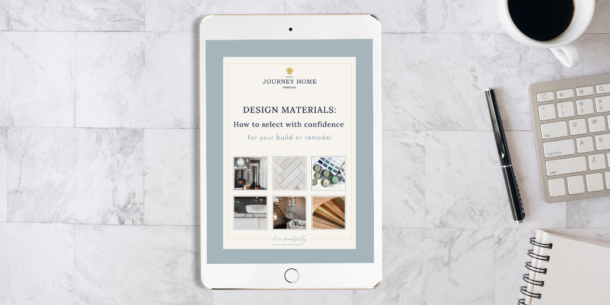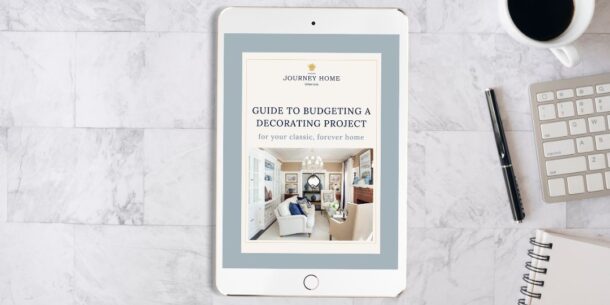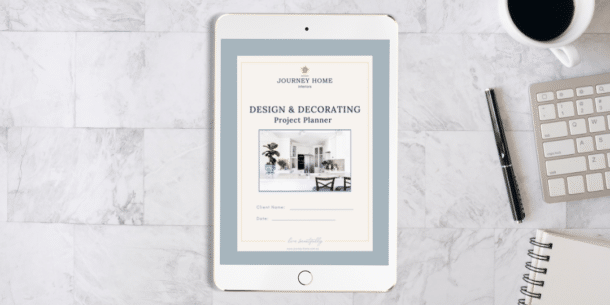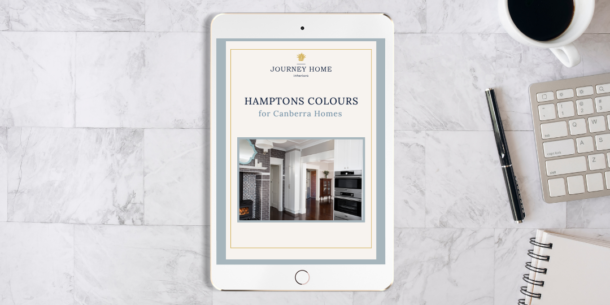With Covid resulting in kids moving home and the Christmas and New Year’s holidays just a couple weeks away, your home might be getting fuller than normal. Soon, you’ll be hosting extra visitors, entertaining, and maybe even cooking for a crowd.
And your home? In my experience, it will either rise to the task and make these joyful days easier, or… it will fall short.
Now, if your home isn’t perfect and you wish you could renovate or redecorate, that is more than okay. There’s no reason those goals should pause your festivities and merriment. (Haven’t we all earned it this year?) However, the holidays present the perfect opportunity to effortlessly evaluate your home during one of the busiest times per year. Best of all, it can be fun and include the whole family!
It starts with…
My Design & Decorating Project Planner
If you are thinking about renovating or decorating, my Design and Decorating Project Planner is a valuable resource for any time of year. That said, it is an especially good idea to put your home through the evaluation process during the holidays, to see how your home stacks up with extra visitors and entertaining going on.
If you’re worried that it will be extra work for you — on top of preparing your home for guests, planning the Christmas menu, and heading out to the shops — let me put your mind at ease. The process I suggest will feel effortless.
Below, I’m going to share a consolidated 5 steps from my Design and Decorating Project Planner. It is free to download and includes several worksheets, so I highly recommend downloading it if you haven’t yet. If time is an issue, you need only do Step 2 (below) and save the rest for another day or week when you have more time.
Ready to see how you can evaluate your home quickly, easily, and with the whole family? Come take a look…
Step 1: Prioritising Home Improvements
The first step in the Project Planner is to list and prioritise your desired home improvements. These can be aesthetic or functional improvements, listed by room or for the whole home. In the Project Planner, you will have a chart where you can write these down and then number them.
It is important to document these first, because after you evaluate each room in your home, your desired home improvements and priorities may change!
Step 2: Assessing Your Existing Spaces (with the Family!)
This is the part of the process where the Project Planner provides worksheets for each room in your home. I suggest printing these out and keeping them in the room, ideally somewhere by the door where people will see them. Have a pencil available for keeping notes on what you observe working and not working for each space now that it’s at full capacity.
Examples:
- The kitchen is crowded and it’s difficult to cook
- There’s not nearly enough storage space in the bathroom
- The living room is dark and dated
- With guests visiting, there is not enough seating
- Etc.
You can also invite guests to record their thoughts, as well. When we live in our spaces for so long, “blind spots” develop, issues that we no longer see simply because we’re accustomed to them.
Getting fresh eyes and a new perspective on shared spaces — bathrooms, living rooms, the kitchen or guest bedroom — can help you more accurately evaluate your spaces. Just be warned… everyone is a “designer” so you may need to take the feedback with a grain of salt. 😉
Step 3: Addressing the Whole Home & Your Future
The next step is to do the same exercise, but for the home as a whole. These could be issues related to style, flow, and function, such as…
- Visitors have to walk past _______ to be seated in the living room
- We don’t use _______ room
- The kitchen and living room look like they belong in two different houses (or decades)
- Etc.
You can invite your visitors to share thoughts on this one too, but I don’t think it’s essential to poll the whole group unless you want to. Whole home fixes are likely a bit more personal. In the Project Planner, I also include an additional step where we talk about your future plans and how your home might be important for supporting those goals or lifestyle changes.
Step 4: Revising Your Priorities
Now that you have several sheets’ worth of ideas for home improvements, YOU get to decide which are the most important to you and your spouse (and anyone else who actually lives in the home). I’ve given you another worksheet where you can rewrite your desired home improvements and re-prioritise them. It will be interesting to see if and how your priorities have changed!
Step 5: Calculating Your Investment Range & Timeline
The final steps in the Project Planner help you move closer to actioning your goals. I take you through some simple steps for calculating your ideal investment range, deciding when is the best time to start your project, and planning for a fully completed project or one that takes place in several phases over time.
There’s no right or wrong way to do it — you get to decide what works best for your budget and lifestyle. And if you’re not sure what your best first step is, I warmly invite you to schedule a complimentary 15-minute chat with me. I would be happy to point you in the right direction.
I know this quick overview for evaluating your existing home will be extremely helpful. In fact, our Journey Home Club members tell me the exercise crystalised their plans.
The process is a journey, so I strongly recommend thinking now, so you are ready to act in 2021. I want nothing more than for you to feel proud of your home and live the lifestyle you love.
Cheers to a New Year of living beautifully,
Nadine













